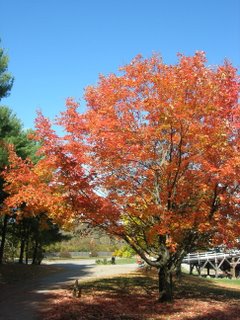 Is there any word or expression that better defines the state of the presidency in the United States?
Is there any word or expression that better defines the state of the presidency in the United States?Of coure, Lake Woebegon is also a fictitious town in Minnesota, the creation of Garrison Keillor, host of A Prairie Home Companion which is heard everywhere on public radio stations. Keillor is the Will Rodgers of the 21st century, an apolitical homespun humorist who makes us feel good about the America that still exists in the land of ideals. Or does he?
My friend Jane emailed me a copy of Keillor's syndicated column published earlier this month which begins: "I would not send my college kid off for a semester abroad if I were you. Last week, we suspended human rights in America, and what goes around comes around. Ixnay habeas corpus." Whoa! I had been taking Keillor for granted. This guy does not mince words. And if he does, he throws in some spicy seasoning to make our eyes water and our hearts burn.
Keillor, in yet another passionate column this month, describes the Military Commissions Act of 2006 as "legalizing torture and suspending habeas corpus and constructing a loose web of law by which you and I could be hung by our ankles in a meat locker for as long as somebody deems necessary." And in a third October column, Keillor celebrates Columbus Day by wondering who might win the title of the All-Time Worst President. "The Current Occupant...is contending with Pierce, Buchanan and Warren G. Harding," and adds, "he's had so much more to be worst with."
I propose that we change Columbus Day to Bush Day, a cautionary holiday, like Halloween, a day to meditate on the hazards of ambition. We could observe it by going through the basement and garage and throwing out stuff we don't want or need.Certainly not everyone likes Keillor. A writer in the National Review once called him a "horrid left-liberal scold, dripping with contempt for nearly everything Middle American." Why is it that the Right can't take a joke? They have their comedians -- Rush Limbaugh, Donald Rumsfied, and Ann Coulter -- and we have ours -- Jon Stewart, Michael Moore, Al Franken, etc., and I'll match our blue team against their red one any day.
Also by not mortgaging the house to pay for a vacation, and not yelling at the neighbors, and not assuming that the law is for other people. A day to honor kindness, industriousness and modesty.
But Keillor, like Stewart, is not just a comedian, no matter how much they pretend otherwise. Both speak truth to power. The It's-OK-to-Torture bill was supported by 65 senators. None of them, Keillor writes, "has any right to speak in public about the rule of law anymore, or to take a high moral view of the Third Reich, or to wax poetic about the American Ideal. Mark their names." A couple, he noted, made a show of opposing the bill but voted for it anyway because they believed the court will throw it out.
If, however, the court does not, then our country has taken a step toward totalitarianism. If the government can round up someone and never be required to explain why, then it's no longer the United States as you and I always understood it. Our enemies have succeeded beyond their wildest dreams. They have made us become like them.Many of you have seen the passionate critique of this horrendous bill by Keith Olbermann on MSNBC. If I could figure out how to include video in my blog, I would put it here. In the meantime, if you click here, you can find Olbermann on truthout.org.
But, as Keiller reminds us, "Maybe we've been too lenient with enemies of the state. A period of stark repression might be a rich and rewarding experience for all of us." Perhaps Cheney and Bush will decide in a couple of years that giving up power will be tantamount to cutting and running in the face of global terrorism, and they'll cancel the next presidential election. Anything is possible.
Needless to say, VOTE on Nov. 7 for political representatives and senators who will save us from this insanity.






















